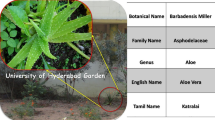Abstract
Purple membrane (PM) has been extracted and purified from archaebacteria for thin film development. The purified purple membrane is isolated in 1 % polyvinyl alcohol solution for making thin film within gelatin and organically modified silicate matrices. For thin film within gelatin matrix, homogenized purple membrane suspension is mixed with 8 % gelatin and poured into a specially designed block with desired thickness of spacer having hydrophobicity followed by gelatinization of the same over home-made thermostatic control unit at 38 °C. The gelatinized matrix is then allowed to dry under controlled conditions of humidity and temperature. The films of varying thicknesses ranging between 40, 50, and 60 μ are used for photo-electrochemical measurements. The results on photo-electrochemistry of non-oriented purple membrane film provides valuable information on the generation of forward (light on) and backward (light off) photocurrent as a function of: (a) applied potential and (b) film thickness. An increase in applied negative potential increases the amplitude of photocurrent whereas decrease in film thickness facilitates the reversibility of photocurrent response.









Similar content being viewed by others
References
Sharkany, J. P., et al. (2005). Bacteriorhodopsin-based biochromic films for chemical sensors. Sensors and Actuators B-Chemical, 107(1), 77–81.
Gu, C., et al. (1992). Cross-talk-limited storage capacity of volume holographic memory. Journal of the Optical Society of America a-Optics Image Science and Vision, 9(11), 1978–1983.
Curtis, K., & Psaltis, D. (1992). Recording of multiple holograms in photopolymer films. Applied Optics, 31(35), 7425–7428.
Birge, R. R., et al. (1990). Nonlinear optical-properties of bacteriorhodopsin - assignment of 2nd-order hyperpolarizabilities of randomly oriented systems using 2-photon spectroscopy. Molecular Crystals and Liquid Crystals, 189, 107–122.
Takai, K., & Horikoshi, K. (1999). Genetic diversity of archaea in deep-sea hydrothermal vent environments. Genetics, 152(4), 1285–1297.
Oesterhelt, D., & Stoeckenius, W. (1974). Isolation of the cell membrane of Halobacterium halobium and its fractionation into red and purple membrane. Methods Enzymol, 31(Pt A), 667–78.
Hartmann, R., & Oesterhelt, D. (1977). Bacteriorhodopsin-mediated photophosphorylation in Halobacterium halobium. European Journal of Biochemistry, 77(2), 325–335.
Danon, A., & Stoecken, W. (1974). Photophosphorylation in Halobacterium-Halobium. Proceedings of the National Academy of Sciences of the United States of America, 71(4), 1234–1238.
Shand, R. F., & Betlach, M. C. (1991). Expression of the bop gene cluster of Halobacterium halobium is induced by low oxygen tension and by light. Journal of Bacteriology, 173(15), 4692–4699.
Weetall, H. H., et al. (1993). Bacteriorhodopsin immobilized in sol-gel glass. Biochimica Et Biophysica Acta, 1142(1–2), 211–213.
Cullin, D. W., Vsevolodov, N. N., & Dyukova, T. V. (1995). Holographic properties of triton X-100-treated bacteriorhodopsin embedded in gelatin films. Biosystems, 35(2–3), 141–144.
Pandey, P. C., et al. (1999). Electrochemical studies on D96N bacteriorhodopsin and its application in the development of photosensors. Sensors and Actuators B-Chemical, 56(1–2), 112–120.
Pandey, P. C., Upadhyay, S., & Upadhyay, B. C. (2005). Photo-electrochemistry of ormosil sandwiched D-96N bacteriorhodopsin. Journal of Sol-Gel Science and Technology, 33(1), 51–58.
Maccioni, E., et al. (1996). Bacteriorhodopsin thin film as a sensitive layer for an anaesthetic sensor. Thin Solid Films, 284, 898–900.
Boyer, A., et al. (1995). Color discrimination by forward and reverse photocurrents in bacteriorhodopsin-based photosensor. Biosensors & Bioelectronics, 10(5), 415–422.
Pandey, P. C., et al. (1998). Dependence of M, N and O states decay kinetics of D96N bacteriorhodopsin on amine and amino compounds and its application in chemical sensing. Sensors and Actuators B-Chemical, 46(2), 80–86.
Indian Patent number 3894/DEL/2011.
Hong, F. T. (1997). Molecular Sensors based on the photoelectric effect of bacteriorhodopsin: Origin of differential responsivity. Materials Science and Engineering: C, 4, 267–285.
Scherrer, P., Mathew, M. K., Sperling, W., & Stoeckenius, W. (1989). Retinal isomer ratio in dark-adapted purple membrane and bacteriorhodopsin monomers. Biochemistry, 28(2), 829–834.
Meyer, O., Ollivon, M., & Paternostre, M. T. (1992). Solubilization steps of dark-adapted purple membrane by Triton X-100: A spectroscopic study. FEBS, 305(3), 249–253.
Acknowledgments
The author is thankful to DST, New Delhi for financial support.
Author information
Authors and Affiliations
Corresponding author
Rights and permissions
About this article
Cite this article
Pandey, P.C., Pandey, D. & Singh, R. Extraction and Purification of Purple Membrane for Photochromic Thin Film Development: Application in Photoelectrochemical Investigation. Appl Biochem Biotechnol 168, 936–946 (2012). https://doi.org/10.1007/s12010-012-9832-3
Received:
Accepted:
Published:
Issue Date:
DOI: https://doi.org/10.1007/s12010-012-9832-3




